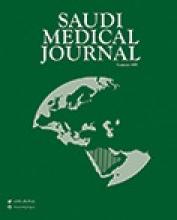Abstract
This paper evaluates the progress of anatomy and dissection during the Middle Ages both in Europe and in the Muslim World. For that purpose, the functional anatomy of the ureterovesical junction and the mechanism of micturition were studied both in the works of Galen (130-200 AD) and in the works of 6 Islamic medical scholars who lived in the period from the ninth to the thirteenth centuries AD (Alrazi, Alzahrawi, Ibn Sina, Al-Baghdadi, Ibn El Nefis and Ibn El Quff). The study relied, only, on original sources in the form of authentic editions and manuscripts. In general, the ideas and findings of those 6 Islamic physicians, as regard the anti-reflux and the micturition mechanisms, differed and contradicted with those of Galen but conformed well with our present day concepts.
- Copyright: © Saudi Medical Journal
This is an open-access article distributed under the terms of the Creative Commons Attribution-Noncommercial-Share Alike 3.0 Unported, which permits unrestricted use, distribution, and reproduction in any medium, provided the original work is properly cited.






